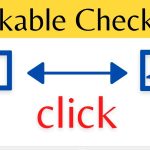Hey there! If you own or work for an HVAC company, you likely already know how competitive the industry is. Every HVAC business wants to rank at the top of those Google search results and get their phones ringing off the hook with new customers. But claiming those top spots isn’t easy. You need an air-tight SEO for HVAC companies that helps search engines understand what your company does and why you’re the best at it. This ensures your website shows up when people search for terms related to your services.
As an HVAC marketing professional focused specifically on SEO, let me walk you through exactly what it takes to get your HVAC business found online. I’ll share insider tips to boost your local rankings and help you bring in more leads than ever before!
SEO for HVAC Companies Plan
| SEO Aspect | Action | Estimated Timeframe |
| Keyword Research | Conduct thorough keyword research to identify relevant and high-volume search terms related to HVAC services in your target area. | 2-4 weeks |
| On-Page Optimization | Optimize website content, including titles, meta descriptions, headers, and body text, to incorporate target keywords naturally and improve overall page relevance. | 4-6 weeks |
| Local SEO | Claim and optimize your Google My Business listing, ensure accurate business information on online directories, and build local citations to improve local search visibility. | Ongoing |
| Technical SEO | Ensure website is mobile-friendly, has a fast loading speed, and follows technical SEO best practices to enhance user experience and search engine crawlability. | 2-4 weeks |
| Content Creation | Develop high-quality, informative content, such as blog posts, articles, and FAQs, that addresses common HVAC concerns and provides valuable insights to potential customers. | Ongoing |
| Link Building | Implement strategies to acquire backlinks from reputable websites, such as guest blogging, industry directories, and social media outreach, to boost website authority. | Ongoing |
| SEO Monitoring and Analysis | Regularly track website traffic, keyword rankings, and conversion rates using analytics tools to measure SEO performance and identify areas for improvement. | Ongoing |
Know Your Audience
Before diving into nitty-gritty tactics, let’s start with the basics. The foundation of strong SEO is understanding who your ideal customers are and what kind of language they use when searching for your services.
Put yourself in the shoes of different customer personas. Picture a young family whose AC just broke during a heatwave. They might search something like “emergency air conditioning repair.”
Or maybe it’s a middle-aged woman noticing her furnace is making strange noises. She may look for something like “HVAC maintenance near me” instead.
Make a list of all the relevant search queries customers might use to find an HVAC provider. Brainstorm different variations too, like using plurals or rearranging the words. This keyword research gives you insights into content opportunities and helps guide your broader SEO game plan.

Beef Up Your Website Content
Armed with those high-value keyword phrases, it’s time to optimize your website content. The keywords customers search should also appear prominently on relevant pages throughout your site. This signals to Google what each page is about.
For starters, make sure key HVAC services show up in the first paragraph of each service page. Like “emergency heating repair” on your furnace repair page. Work these terms naturally into the rest of the content too.
I also recommend creating dedicated landing pages that target popular search queries. For example, an entire page explaining “no heat emergency furnace repair” services.
When tackling these pages:
- Keep sentences short and scannable. Use bite-sized chunks of information.
- Break it up with subheadings. Guide readers with H2 and H3 header tags.
- Include FAQs. Turn common questions into headings that search engines can grab.
- Optimize images. Write keyword-rich alt text and file names.
- List related services. Crosslink between services with shared search terms.
This gives every page more weight around its core focus keywords. The more relevance you have, the more authority you build up over time.
Craft Compelling Meta Descriptions
Meta descriptions are those short paragraphs search engines show under your page title. They summarize what the page is about and compel searchers to click.
But did you know meta descriptions themselves don’t directly influence rankings? Their purpose is getting people to select your site from the packed search engine results page (SERP).
Without a meta description, Google may just show your page’s first sentence instead. This likely won’t be as effective at capturing attention or conveying your HVAC expertise.
That’s why crafting compelling meta descriptions is so valuable:
- Use keywords naturally. Include a few primary keywords, but don’t just cram random phrases in there.
- Hook readers. Open with something interesting before describing what the page offers.
- Add a call to action. Give them a reason to pick your site, like a coupon code or free quote.
Keep these teasers under 160 characters so they don’t get cut off in SERPs. Well-written meta descriptions improve click-through rates (CTR), which indirectly signals high-quality content to Google.
Structure Your Site
Now let’s look at your website’s information architecture – how pages logically connect to each other through menus and links. Solid structure reinforces relevancy to search bots crawling from page to page.
Start with your homepage content focusing broadly on HVAC services you offer. Then link to separate landing pages targeting specific service searches around installation, replacements, tune-ups, etc.
Break primary services down even further when needed. For example, AC repair could have pages discussing emergency repairs, AC not cooling issues, capacitor replacements, and so on based on the keywords you want to target.
Ensure all pages link back to relevant sections. Your furnace replacement page should connect visitors to HVAC installation and emergency furnace repair pages. This intuitive site mapping helps search bots index more pages.
Pro tip: Pay attention to which pages get the most organic traffic and earn higher rankings. Produce more supporting content around these winners to double down on what’s already working.
Localize Your SEO
Here’s a huge mistake I see HVAC companies make all the time: They don’t optimize for local search.
But think about it – at least 75% of searchers have local intent when searching for services like HVAC repair. They include the city name like “HVAC companies Kansas City” to find providers nearby.
Luckily, local SEO isn’t hard once you know the basics:
Flaunt your location
Start by ensuring your city and state appear prominently on your site. Pop them into headers, page titles, and content. Don’t make customers hunt for where you’re located!
NAP citations
Your NAP refers to your company Name, Address, and Phone number. Make sure these details appear consistently across major directories like Google My Business, Yelp, and Angie’s List. Proper NAP citations signal local legitimacy.
City-specific pages
Consider creating unique pages targeting searches for HVAC services in individual cities you serve. This shows Google you geo-target different areas.
Optimized GMB listing
Your Google My Business profile lets customers find your latest contact info right in search and Maps. Fully complete your profile and use keywords in descriptions, images, services offered, etc. Ask happy customers to post 5-star local reviews too!
See what I mean about easy wins? Just optimizing these local signals lifts organic visibility in your geographic service area.
Score Quality Backlinks
No SEO guide would be complete without discussing backlinks. Backlinks are basically mentions of your website from an external page that links back to your content.
Search engines view backlinks like votes of confidence from other sites. The more high-quality sites linking to you, the more authority you must have around those linked keywords.
But not all links carry the same weight. On one end there are worthless low-quality links from spammy, irrelevant sites. On the flip side are editorial backlinks from trusted industry media outlets and publications. These are pure gold!
Here are smart backlink building strategies for HVAC companies:
- Guest post on industry blogs by providing unique, insightful content in exchange for a backlink and author bio.
- Get featured in roundups on sites like Modernize or Angi’s List highlighting top local HVAC repair providers.
- Submit helpful comments with a website link on highly-ranked articles and videos.
- Partner with home renovation blogs as a trusted HVAC service source for them to recommend.
- Seek press coverage related to community involvement and company achievements.
Focus on contextualized, natural links instead of obvious guest posts solely seeking backlinks. And never pay for guest posts or links! Stick to high-quality referral traffic.
Slowly build up your domain authority and soon that fresh backlink love transfers SEO ranking power to your site.
Track Your Performance
Whew, we just covered a ton of ground when it comes to SEO for HVAC companies! By now you’re probably wondering:
How the heck do I know if all this optimization work is actually paying off?
Excellent question, my friend! You need to closely monitor key SEO metrics showing how both search engines AND customers respond over time.
Here are the top HVAC SEO KPIs to track each month:
Organic traffic – Total visits from free search engine results
Keyword ranking – What place your target pages hold in Google
Backlinks – Tally of new links earned
CTR – Percentage of searchers clicking your listing
Mobile friendliness – Google test for mobile optimization
Page speed – Site loading performance grade
Set goals to steadily improve each metric and compare to previous periods. Pay extra attention to rating fluctuations for priority keywords and pages. This indicates if recent optimization efforts had positive or negative impacts.
Tools like Google Analytics, Search Console, and SEMRush make it easy to monitor everything in one spot. Dive into the data each month to inform your evolving SEO strategy.
Now let’s wrap things up with some of the most frequently asked questions about HVAC SEO…
FAQs
What are the best SEO practices for HVAC websites?
The HVAC SEO best practices include optimizing website content for relevant keyword phrases, improving online visibility for local service areas, earning high-quality backlinks from industry websites, and tracking monthly search engine ranking and traffic data.
How much does HVAC SEO cost?
Professional monthly SEO services tailored for HVAC companies typically range from $750 – $2,000+ depending on involvement needed. DIY efforts only require time and tools with no monetary investment but usually progress slower.
How long does it take to see HVAC SEO results?
Patience young padawan! Consistent SEO efforts take an average of 3-6 months before Google rankings substantially improve. But you may notice traffic lifts in as little as 1-2 months from early wins.
What are some HVAC SEO tools I should use?
Top SEO tools for HVAC sites include Google Search Console for tracking performance data, Google Analytics for website traffic analytics, Google My Business for local listings, SEMrush/Ahrefs for tracking keywords and backlinks, and Google PageSpeed Insights to improve site speed.
How can I learn HVAC SEO on my own?
Some helpful free learning resources include the Google Analytics Academy course for understanding web analytics, Moz’s Beginners Guide To SEO for an SEO framework, and Backlinko’s blog for the latest link building tips.
Let’s Recap
Phew! That was quite the SEO for HVAC companies deep dive wasn’t it? By now you should have a solid game plan for getting your HVAC website found locally online, bringing in more search traffic, and outranking competitors.
The key SEO ingredients come down to:
- Researching customer keyword searches
- Optimizing website content
- Improving local visibility
- Earning high-quality backlinks
- Tracking monthly performance
Implementing effective SaaS SEO strategies for increasing organic software discovery requires dedication and persistence. Stay patient and stick with this SEO checklist long enough, and soon you’ll see your web presence and phone ring with new service calls!
Need more hands-on help improving HVAC SEO? Feel free to comment. I’d be happy to offer more personalized advice for your website.
Now go show those other HVAC companies who the new SEO sheriff in town is!







